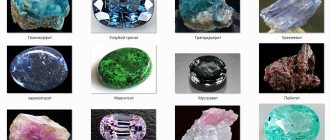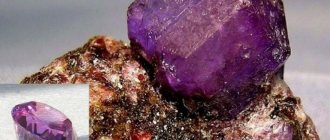The summit of Sigiriya, the island nation of Sri Lanka, is covered with the remains of ancient gardens and buildings. Tuul & Bruno Morandi/Getty Images
Some of the most recognizable natural landmarks in the world are stone monoliths. Wherever they are found, they dominate landscapes and inspire people's admiration.
What is a monolith?
A monolith is a prominent mountain, boulder, or tower consisting of one large solid stone. In most cases, monoliths are composed of hard, erosion-resistant volcanic or metamorphic rocks and are subject to erosion by the surrounding landscape.
Some monoliths seem out of place, protruding into the sky from an unremarkable landscape. Many of these rock formations inspire people to climb to the top, while others are sacred sites where climbing is prohibited.
Due to the broad definition of which mountain structures can be considered monoliths, there is no authoritative ranking of the world's largest monoliths. Tour operators and other local businesses sometimes make claims about the monolith's relative size, but empirical data to support these claims is difficult to find. However, some geological formations are so massive and famous that they have taken their positions among the largest monoliths in the world.
Here are the 10 largest and most impressive monoliths in the world.
Brief information
Evaluation of a stone by a gemologist
Gemmalogy is the science that studies the properties of precious stones. A professional gemologist will be able to distinguish a natural stone from a high-quality fake. Let's find out the factors that influence their cost.
In the Russian Federation, the list of precious stones is approved by federal legislative documents. In the Russian Federation, uniform rules have been formed by which minerals are assessed. Experts analyze the quality of stones according to criteria, draw a conclusion about the suitability of the mineral for use in the jewelry industry, and set an estimated cost.
Among the criteria used to evaluate a stone, we note:
- weight and dimensions (the cost of a stone directly depends on its size);
- color of the mineral (dark and light stones are used in jewelry production, but their price will be significantly lower; extraneous shades also reduce the value of the mineral);
- quality of processing;
- defects.
When evaluating very large crystals, a reduced coefficient is used, since the mineral will be difficult to sell on the market (an exception to this rule are rare precious stones).
Some precious minerals have the ability to change color depending on their orientation. This is why experts examine minerals against a white background using reflected daylight.
Mushroom megaliths and boat megaliths
Menorca Island, Spain
The inventive people of Menorca built three different types of megaliths. Navets are like upside-down boats, talayots are like towers, and thauls are pillars folded into a “T” shape. They appeared at the end of the Bronze and Iron Ages, but why is not clear. Whether they were houses, sanctuaries, tombs or defensive fortifications, stones are good at keeping secrets. If you want to puzzle over the mysteries of the ancients, first of all get out to Trepuco, where, under the hot Spanish sun, stands a five-meter tall taula - the largest of all preserved ones.
Hotels near Sacsayhuaman
There are other megalithic structures in South America - they make up the remains of Cyclopean walls, the lower tier of the most ancient terraces and buildings in Machu Picchu, Sacsayhuaman, Ollantaytambo, Cusco, Tambomachay (Peru). The age of some of them is determined to be 14,000-17,000 years. Similar ruins are located in dozens of regions of Peru, Bolivia, Mexico and Colombia near the villages of Vinay Vaina, Taraco, Llactapata, Copacapana, Lokvepaia and others. But those are much less studied. Particularly interesting are the ruins of 3 walls about 600 m long in the “fortress” of Sacsayhuaman. The height of two walls is 10 m, and the third - 5 m. The first (lower) wall is made of diorite and andesite blocks weighing 100-200 tons, the largest dimensions are 4x5x9 m. The second and third walls are built from slightly smaller blocks. Moreover, all the blocks are perfectly matched to each other, the gaps between them are simply not visible. Polyhedral blocks have a rather complex shape. They were mined in a quarry located 20 kilometers from Sacsayhuaman, and at this distance there is very uneven terrain (steep descents, ascents, gorges).
Megaliths in the Lore Lindu National Park
Sulawesi Island, Indonesia
Four hundred megaliths are hidden in Lore Lindu National Park on the island of Sulawesi. The most noticeable is the 4.5-meter “Palindo” with round eyes and an enlarged phallus. The smaller idol lies in the rice field: as if hidden and spying. In addition to human figures, the park is full of stone jugs and disks, which apparently served as lids. Nothing is known exactly about these megaliths. And finding them is not easy: in order not to get lost among the forested hills, it is better to call a guide for help. If you're lucky, along the way you'll see the Babirussa fanged pig and Tonk macaques - they live only in Sulawesi.
See also: The most unusual zoos in the world
Hotels near Yonaguni Underwater Megaliths
Pyramids and megalithic structures of unknown antiquity exist in a variety of places:
- at the bottom of the Bahama Bank near the islands of Andros and Bimini;
- on the island of Ponape and 92 artificial islands of Nan Madol, as well as in the shallow waters near them - in the Pacific archipelago of the Caroline Islands;
- at the bottom of Rock Lake in Wisconsin (USA);
- at the bottom of the sea near the Japanese island of Yonaguni, etc.
The latter deserve special attention, because multi-meter blocks with regular outlines were discovered there, resting at a 6-meter depth near the coast of Yonaguni Island from the Okinawa archipelago. In 1985, they were discovered by Japanese scuba diver K. Aratake. He told marine seismologist from Okinawa University M. Kimura about his discovery. The scientist conducted a detailed study of them for 10 years, after which he concluded that this was nothing more than a sunken prehistoric city. In 1997, underwater video filming was carried out here by the film crew of G. Hancock, and at the same time geology professor R. Schoch from the University of Boston worked. They were able to confirm that the stone blocks near the shores of Yonaguni Island are of artificial origin.
Hotels near Puma Punku and Kalasasaya (Tiwanaku)
Near the Bolivian village of Tiwanaku, located 20 km from Lake Titicaca at an altitude of 4000 m above sea level, are the famous megaliths Puma Punku and Kalasasaya. In the distant past, they were cyclopean structures, the outer walls of the large Kalasasaya Sun Temple had a length of 130x1500 m. Next to it was the Akapana pyramid with dimensions of 200x220 m. Constructed of giant stone blocks of andesite, sandstone or diorite, weighing up to 120 tons, the walls -where they were more than 3 meters thick. The ruins of Puma Punku, lying just 300 m from Tiwanaku, amaze with their grandiose scale - huge slabs weighing up to 500 tons are scattered over several hectares. They are hewn from diorite and andesite, mined in the mountains 17 km from here. In addition to their enormous size and weight, the Kalasasaya and Puma Punku stones surprise with their filigree processing using technology unknown to us. There are suggestions that ancient builders worked with these rocks like plasticine, perhaps even melting them and pouring them into molds. In the ancient quarries here, there are no traces of crushing or drilling, only smooth niches remain, as if someone had cut the blocks with a giant knife from “plasticine” rock. The blocks often have a very complex shape, with various cutouts with ideal geometry. They fit so tightly that even a thin blade cannot be inserted between them.
Hotels near Stonehenge (UK)
130 km southwest of London there is a unique megalith - Stonehenge, included in the UNESCO World Heritage List in 1986, and within the country is under the care of English Heritage. According to scientists, this structure is about 5,000 years old. Its appearance is widely known - a circle of stones, around which there are 56 burial holes. In the center of the megalith there is a stone altar weighing about 6 tons. In total, Stonehenge counted 82 stone blocks weighing 5 tons, 30 - 25 tons each, and 5 arches of three stones (triliths) - 50 tons each. The arches are precisely oriented to the cardinal points. To create Stonehenge, stones were used from different places, some of which were located 210 km from the megalith.
Mysterious drawings on stones
Tiya (Tiya) town, Ethiopia
Photo: Richard Mortel, CC BY 2.0
If you sincerely dreamed of becoming an archaeologist as a child, go to Ethiopia. Near the city of Tiya there are steles about which science has said nothing at all, so with due diligence you have every chance of making an important discovery. However, it is interesting to even just take a closer look at the stones with daggers and circles carved on them. Try to guess what the squiggle means that looks like a sprout emerging from the ground! There are puzzle drawings on 32 of the 46 steles, so you will have something to do during your Ethiopian holidays.
Newgrange Tomb
Ireland
The landowner sent workers to dig up stones on the hill, and they stumbled upon the entrance to the dungeon. This is how Newgrange was discovered, a corridor tomb that turned out to be older than Stonehenge. Outside it is a large mound surrounded by a ring of stones. And inside, along a narrow corridor you find yourself in a burial chamber. Natural light penetrates inside for only 17 minutes a year - during the winter solstice. If you want to get to Newgrange on this very day, take part in the lottery - what if you get lucky? If you arrived at a different time, it’s no problem: in your presence, the lights in the tomb will be turned off, and the light of a lamp will shine through the window. This performance is no less impressive than the real solstice.
Dolmens on the Zhane River
Gelendzhik, Russia
To see dolmens, you don’t have to travel halfway across the Earth. On the Zhane River near Gelendzhik a whole family of ancient tombs awaits you. Round dolmens are made of stone blocks the size of a chest. Rectangular - made of five giant slabs, which raise only one question: how could it even be built? Official science is limited to the funeral version, and you look for yourself and decide what to believe in - in the observatory or in the relay of magical energy.
Don't miss: From Sochi to Elbrus: 16 reasons to go to the Russian Caucasus
Yellow Tiffany Diamond
Lady Gaga at the 2019 Oscars
Audrey Hepburn wearing a Tiffany diamond necklace
Another one of the largest diamonds in world history is the so-called Tiffany Diamond. A stone weighing almost 300 carats was found in one of the mines in South Africa.
Tiffany & Co campaign About Love with Beyoncé and Jay-Z In 1878, Charles Tiffany acquired the stone, giving it the name of his jewelry brand. Thanks to its rare bright yellow hue, the diamond has gained worldwide popularity. His fame was enhanced by his appearance in photographs for the release of the film “Breakfast at Tiffany’s,” in which actress Audrey Hepburn tried on a diamond necklace. And in 2022, the diamond made a social appearance - singer Lady Gaga appeared on the Oscars red carpet wearing an updated Tiffany diamond necklace.
Ahu and Moai - megaliths of Easter Island, hotels nearby
Lost in the Pacific Ocean, Easter Island is home to 887 famous moai sculptures. The largest idols are located on the slope of the Rano Raraku volcano. They have already sunk up to their necks into the ground for many millennia. Some originally stood on ahu - stone pedestals, of which there are about 300 on the island. The sizes of the pedestals range from tens of meters to 200 m. The height of the largest moai “El Giante” (that is, the “giant”) is 21.6 m, and the weight is from 150 to 270 t. It is located in the Rano Raraku quarry. The largest moai standing on a pedestal, “Paro,” weighs 80 tons and is 10 m high. Other moai scattered along the slope of the volcano also have a height of about 10 m.
10 most beautiful places in our worldPlanet Earth is stunningly beautiful! There are dense green forests, clear lakes, wild rivers, slender mountains, aggressive volcanoes and...











